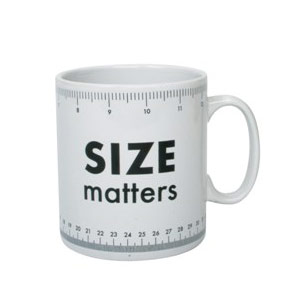Size Matters…at least it does in the world of congregations. Don’t get me wrong. The size of a congregation doesn’t automatically make it any more or less impactful. Small churches and large churches can be equally effective in ministry. However, a congregation’s perception of its size, and how it functions in relationship to that perception…that matters.
 Many congregations today are suffering from something akin to a dysmorphic disorder. When they look at themselves, they see something remarkably different from what the outside world sees. They act on self-images that no longer reflect reality, but images to which they are still strongly attached. They organize themselves to serve the image, rather than the reality.
Many congregations today are suffering from something akin to a dysmorphic disorder. When they look at themselves, they see something remarkably different from what the outside world sees. They act on self-images that no longer reflect reality, but images to which they are still strongly attached. They organize themselves to serve the image, rather than the reality.
One expression of this is the little congregation that has inadvertently grown large over the years, but refuses to see itself as a large and complex institution. Leaders cling to their values of intimacy and family-feel, an image that hasn’t accurately described the church for years. They repeatedly select staff leaders who are most effective in small church contexts. Then they burn out those leaders by emphasizing a relational leadership style, in a system that requires a more managerial approach.
Another expression of the same problem is the congregation that “once upon a time” was a flagship church in the denomination. This is the church that has declined in size and scope, and continues to live in a larger shell of a structure. Leaders can’t bring themselves to right size their space or their leadership structures, because that would involve surrendering an image of prestige and importance which they hold dear. And so, the church wastes resources trying to sustain systems and structures that are inappropriately over-grown for a mid-sized congregation.
A healthy congregation has an accurate body image. It understands that systems and structures must serve the actual complexity of the organization. The healthy congregation understands that size is not an end unto itself, but that size must be understood in relationship to the soul and the mission of the institution.
Recently, leaders of a congregation that I worked with posed the following question to members, as part of a self-study process: “What are the essential, central characteristics that make our congregation unique? “ A disturbing phenomenon surfaced as we began reviewing the collected data. A significant number of people responded to the question about central essential characteristics with some version of, “Well, I guess what makes us unique is that we are big.” These statements about the size of the congregation were often made without any qualifiers about why big was important, or what it helped the congregation to accomplish. People simply thought that what made them unique was their size. Size was an end unto itself.
As we probed the responses a little further, we discovered that people meant many different things when they named size as an essential characteristic of the congregation. Some talked about the fact that the size of the congregation generated enough resources to ensure that the congregation could make an impact in its community. For others, size produced a capacity for excellence in worship and education that they valued. For still others the size of the congregation was a measure of prestige. They valued being part of the “biggest and richest” congregation around. (Leaders expressed a collective “ouch” in response to that last interpretation.)
Today, this congregation is only half the size that it was ten years ago. It is still a large congregation, but linking the congregation’s strategic identity to its size is problematic. How does a congregation feel good about itself at a smaller size when its fundamental self-image is related to being large and impactful? The leaders of this congregation realize that they have a lot of work to do around congregational image, strategic identity, and right-sizing operational expectations.
What stories does your congregation tell about its size? Does your congregation have a size that it thinks it “ought” to be? Listed below are a set of dialogue queries designed to help surface assumptions, and right size leadership expectations:
1. If we are successful in our mission as a congregation, what size will we be? Why?
2. How do we measure our size? What are the most important indicators that we look to, to determine whether we are growing or shrinking, succeeding in our mission or missing the mark?
3. When we tell ourselves the story of our congregation (its history), where does size enter into the storyline? Has size ever been a defining element in our congregational story? What size congregation did our founders imagine that we would grow to be?
4. What are the core values of our congregation? Do any of our core values seem to require “smallness” or “bigness”?
5. How does the size that we are today compare to our size at other moments in time? How big was our congregation in its glory-days? Does it bother us that we are bigger or smaller today?
6. In what ways are we clinging to leadership systems that would more appropriately serve a different-sized congregation? Where do we need to right-size our structures, to effectively serve the congregation that we are today?



